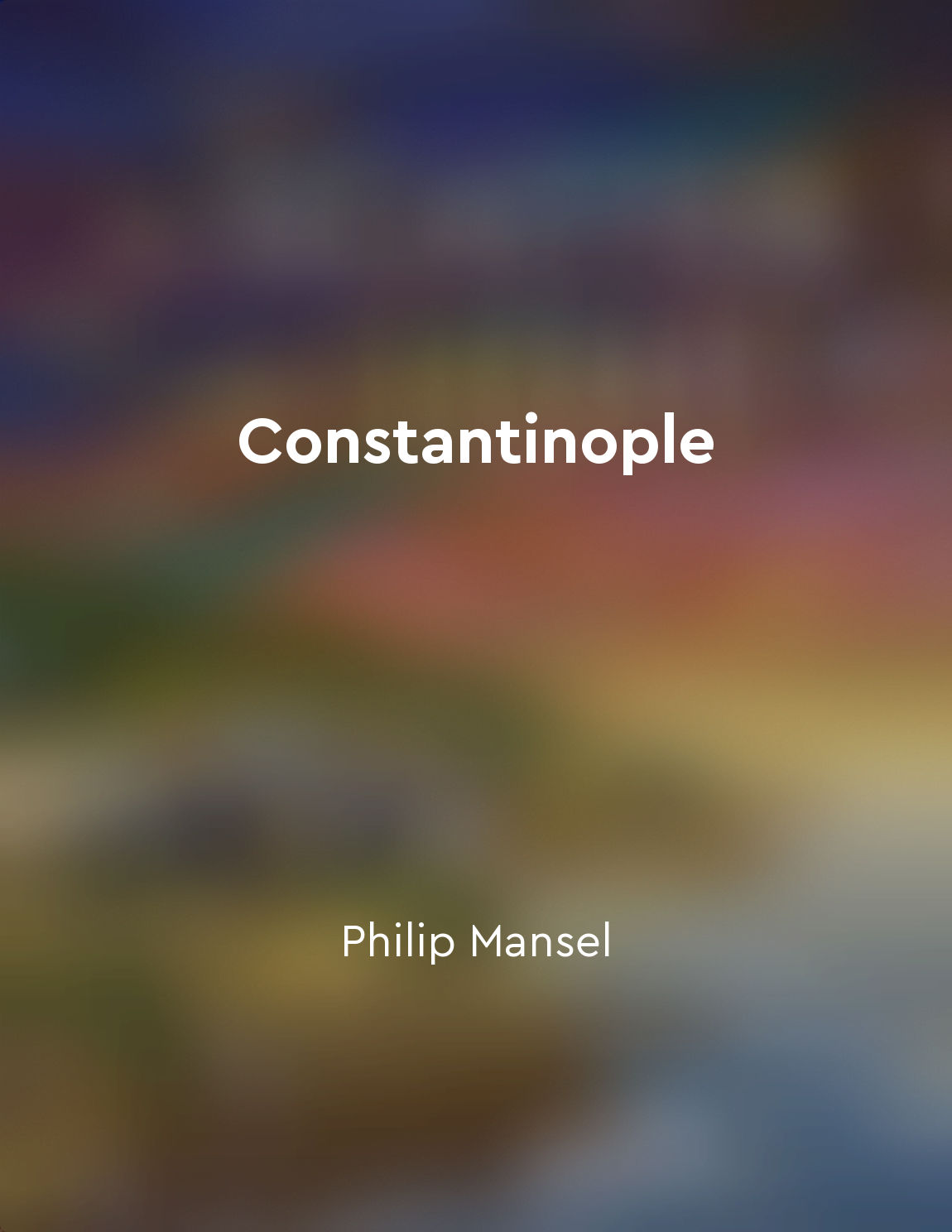The Byzantine Empire rose from the ashes of the Roman Empire from "summary" of The Decline and Fall of the Roman Empire by Edward Gibbon
The Roman Empire, once the mighty ruler of vast territories, faced a series of challenges that ultimately led to its decline. As the empire weakened, it suffered from internal conflicts, external invasions, and economic instability. The once powerful Roman legions struggled to defend the borders as barbarian tribes relentlessly attacked. Amidst the chaos and turmoil, the Eastern half of the Roman Empire, centered around Constantinople, managed to survive and thrive. This region, known as Byzantium, retained much of the Roman administrative structure and continued to function as a powerful entity. The Byzantine Empire emerged as a new political and cultural force, preserving elements of Roman civilization while adapting to changing circumstances. The Byzantine Empire, under the rule of strong leaders like Justinian, sought to reclaim lost territories and restore the glory of Rome. Constantinople, with its strategic location and fortified walls, served as a bastion of defense against invaders. The Byzantines developed sophisticated military tactics and diplomatic strategies to maintain their influence in the region. Despite facing numerous challenges, including conflicts with neighboring powers and internal strife, the Byzantine Empire endured for centuries. Its rich cultural heritage, blending Roman, Greek, and Eastern influences, made it a center of learning and innovation. Byzantine art, architecture, and literature flourished, leaving a lasting impact on future generations.- The Byzantine Empire's rise from the ashes of the Roman Empire was a testament to the resilience and adaptability of civilizations. By building upon the legacy of Rome while embracing new ideas and challenges, the Byzantines created a unique and enduring legacy that continues to shape our world today.
Similar Posts
The leadership of emperors like Nero and Caligula contributed to Rome's decline
The leadership of certain emperors, such as Nero and Caligula, played a significant role in the decline of the Roman Empire. Th...

Grand Bazaar
The Grand Bazaar of Istanbul is a labyrinthine shopping arcade that has stood the test of time for centuries. It is a bustling ...
Plague outbreaks and demographic impact
Plague outbreaks were a recurring nightmare for the inhabitants of the Roman Empire. These outbreaks brought about a catastroph...
Roman Empire's vulnerability to disease
The Roman Empire's vulnerability to disease was a critical factor in shaping its fate. The interconnected world of the Roman Em...
Ancient medical knowledge and limitations
Ancient medical knowledge was a complex tapestry of theory and practice that evolved over centuries. The Greeks and Romans made...
Fall of Constantinople to the Ottomans
The city of Constantinople, once the proud capital of the Eastern Roman Empire, fell to the Ottoman Turks on May 29, 1453, afte...

Architectural wonders
Throughout the pages of 'Constantinople', the reader is transported to a world of architectural wonders that have stood the tes...
Gibbon's analysis of Rome's decline remains a seminal work in historical literature
Edward Gibbon's analysis of Rome's decline is a foundational text within the realm of historical literature. Through his meticu...

